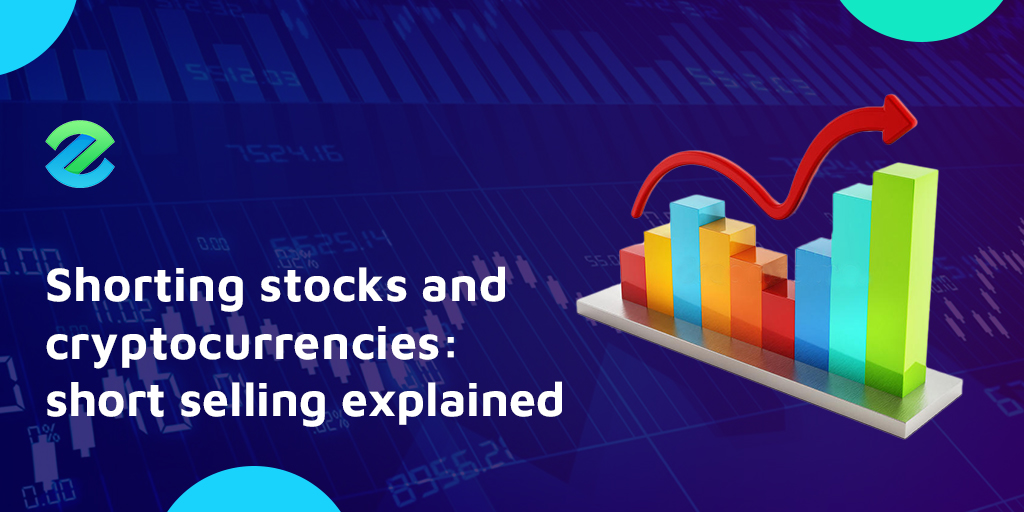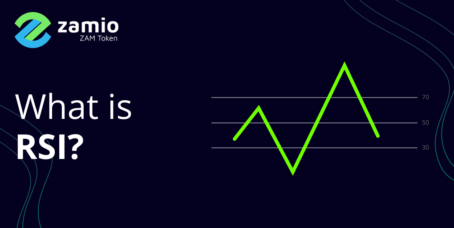Short selling is an advanced, risky, and speculative trading and investment strategy that involves borrowing tradable financial assets such as a stock and cryptocurrency from a broker and selling them to the market then buying them later at a hopefully lower price. Once the trader buys back the tradable asset, he returns it to the broker. If the trader succeeds at selling it at a high price and buying back at a lower one, then he makes a profit off the difference between the sell and buy price.
Shorting selling is not for the weak-hearted and the inexperienced investor. If the price of tradable assets increases, the investor loses money. Theoretically, the price can go up infinitely, creating infinite losses. Experienced investors and traders carefully identify overvalued tradable financial assets through regress market analysis before taking a short position. They also plan an exit strategy ahead of time to avoid further losses if their assessment was incorrect.
Table of Contents
Understanding short selling related terms
The practice of trading a borrowed asset from a broker is known as margin trading or trading on margin. You can either:
Take a long position where you borrow a tradable asset, hold it, and then sell at a higher price.
or :
Take a short position where you borrow a tradable asset, sell it immediately, and then buy it back at a lower price. This trading strategy is known as short selling, which is the focus of this article.
You must have a margin account to conduct such trading strategies. Once you initiate a short position, your broker will credit your margin account with the value of the asset you shorted. You must also top your margin account with a collateral deposit which could equal up to 50% of the value of the borrowed asset. The collateral deposit is called the initial margin requirement or for short initial margin used to protect the broker from losses you may incur on your margin trades.
A 50 % collateral deposit or initial margin means that for every $1 you borrow, you must deposit $0.5 in your margin account. Alternatively, for every $1 you deposit, you can borrow $2 from your broker. The margin requirement can be as low as 1%, depending on the law, the broker, and the type of asset.
1% initial margin means for every $1 you deposit, you can borrow $100. In this case, you are getting 100x the value of your deposit. This increased trading power due to the amplification of borrowing is known as leverage. By trading on margin, which is a type of leverage, you amplify your returns and also your losses. That is why short selling is considered a high-risk high-reward trading strategy.
Additionally, your broker will require to keep your initial margin requirement floating above a specific percentage, usually 25%. This percentage is known as margin maintenance. If your initial margin falls below the margin maintenance, a margin call initiates to warn you to deposit more money to keep your trading position open. Otherwise, your broker will close the position without further warning.
For example, if you borrow a tradable digital asset, such as bitcoin, with a current market value of $2000, then you must deposit 50% of its value in the margin account, which is a $1000 initial margin. Your maintenance margin is 250, which is 25% of $1000. If the deposit drops below, 250 a margin call is initiated.
- Asset price $2000
- Initial margin $1000
- Margin account credit balance $3000
- Maintenance margin $250
- Margin call below $250
Many brokerage firms allow you to trade their own assets under set of conditions. However, if you are on an exchange, you must trade with your own asset. But some crypto centralized exchanges, such as Binance, offer some broker features, such as margin trading. Both brokers and exchanges set the rules of margin trading within the parameters of the law.
An example of short selling
Let’s put this into practice using bitcoin (BTC). Let’s say you want to short one bitcoin since you believe the price will decrease. Let’s assume that the current market price of bitcoin is $100. You decide to borrow one bitcoin from your broker at this price under two conditions:
You pay interest and commission on the transaction.
You must deposit 50% of the value of bitcoin in a margin account.
So you agree to the terms, and you deposit $50 in your margin account since the current price of bitcoin is $100. Now your margin account is credited $150. You initial deposit ($50) plus the value of bitcoin ($100) at the time of initiating the transaction.
Let’s take the optimistic scenario, where you make money on this margin trade:
As soon as you open a short position, the bitcoin gets sold at the current market price of $100. After a few days, the price decrease to $90. You decide to close the position by buying back at this price.
So, you sold the bitcoin first at $100. Then you rebought it at $90.
- Bitcoin initial price at the time of purchase: $100
- Plus: Initial margin (your deposit- equity): $50
- Equals: credit balance: $150
Changes to your equity balance after the price of bitcoin declines to $90:
- Credit balance: $150
- Minus: bitcoin value at the time of sale: $90
- Equals: your equity: $60
- Equity: $60
- Minus: Initial deposit: $50
- Equals: Profit: $10
Therefore, you have a total profit of $10 excluding transaction fees and interest.
Now let’s take the pessimistic scenario, where you loss money on the trade:
The price of bitcoin increases from $100 to $110. You are concerned that the price will increase further. Hence, you decide to liquid your position by buying back the BTC at $110:
- Bitcoin initial price at the time of purchase: $100
- Plus: Initial margin (your equity deposit): $50
- Equals: credit balance: $150
Changes to your equity balance after the price of bitcoin declines to $110:
- Margin account balance: $150
- Minus: bitcoin price at the time of sale: $110
- Equals: your equity: $40
- Equity: $40
- Minus: Initial deposit: $50
- Equals: loss: -$10
Therefore you have a total loss of $10 excluding transaction fees and interest.
Now imagine you did not close the position, and the price kept going up to $140. At this price, your equity balance will drop to 10$:
- Margin account balance: $150
- Minus: bitcoin current market value: $140
- Equals: your equity: $10
If the maintenance margin is 25% of the initial margin or deposit, then your initial margin must not decrease below $12.5 (0.25*50).
Since the price increased to $140 and your equity balance is $10, which is below the maintenance margin of $12.5, your broker will trigger a margin call.
If you don’t deposit more money in your margin account to keep your maintenance margin at $12.5 or above, your broker will liquid your position by buying the bitcoin at the current market price. You would then be left with $10 equity down from $50 and a loss of $40, assuming the broker doesn’t charges you interest and transaction fees.








